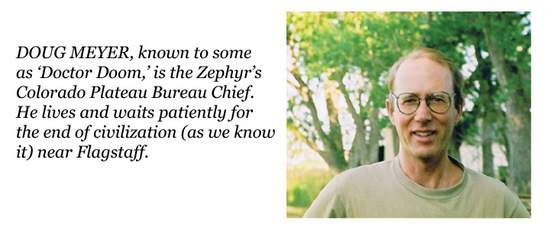What should we think when climate science finally publishes a model result based on old understandings, but which threatens the geopolitical narrative on global warming? Did powerful influence suppress what “big science” would study, or was it a cover-up by progressive media and environmentalists? Could this be the perfect example of “scientific reticence” or perhaps the public simply doesn’t want to know? How about all of the above? Suffice it to say that when, in January of 2018, Scientific American ran the headline “Cleaning Up Air Pollution May Strengthen Global Warming” it was clear to some of us that the public hasn’t understood the full story for quite a long time.1
We’re talking about the cooling effect of man-made sulfate aerosols, which reside in the atmosphere for only days or weeks after being emitted along with greenhouse gases as a result of fossil fuel burning. Sulfate aerosols reflect a significant amount of sunlight back into space before that light can be absorbed and converted into heat, either on Earth’s surface or in the atmosphere. They also generate highly reflective and toxic “brown clouds”, known to anyone who remembers what heavy industry looks like. Though the effect is regional, the cooling is so large that, when averaged over the entire surface of the earth, its magnitude reduces the heat being trapped by CO2 by somewhere between 25 and 50 percent. (See any of the references listed at the end of this article, dated from 1995 through 2013.)
You’ve heard global warming described as a “wicked” problem for humanity, and now you know why. When fossil fuel emissions are eliminated or have their sulfate component cleaned up, Earth’s rate of heat gain actually increases and quite substantially. The new study (Samset et al, 2018), examines the hypothetical “zero emissions” case and the warming that would result. The average of four global climate models suggested that aerosols have delayed 0.7 degrees Celsius of surface warming, and 2.8 degrees between latitudes 60N and 90N. The models also say the hot, bright, clear atmosphere would lead to increased precipitation and extreme weather, particularly in regions where the brown clouds persist today, such as the heavily populated areas of India and Asia.
Most importantly, and as first pointed out a decade ago in a landmark paper (Ramanathan & Feng, 2008), when you add the warming hidden by aerosols and by the oceans to the temperature rise we’ve already realized, you find that Earth is committed to warm by more than 2 degrees Celsius this century. The entire process surrounding the 2015 climate agreement in Paris completely ignored this simple little fact. The paper did not examine potential human countermeasures that could be used only as delay tactics.
Those countermeasures fall in the realm of “geoengineering”, recently renamed “climate intervention” by the National Academy of Sciences in a wise demonstration of humility. Similarly, “solar radiation management” (deliberate high-altitude sulfate aerosol injection) has also been newly christened as “albedo modification” in another nod to unintended consequences. Though it’s never mentioned, perceptive readers of the new aerosol study can see that the authors expect it to be cited as the primary rationale for further geoengineering research.
In fact, in its 500-page report published in 2010, the National Academy of Sciences offered the first official recognition of the link between aerosol masking and geoengineering. However, the NAS apparently found the subject matter so sensitive that their discussion of it was crammed into a single paragraph buried at the bottom of page 197. But the meaning is unmistakable:
 “Finally, aerosol emissions represent an important dilemma facing policy makers trying to limit the magnitude of future climate change. If aerosol emissions are reduced for health reasons, or as a result of actions taken to reduce GHG emissions, the net negative climate forcing associated with aerosols would decline much more rapidly than the positive forcing associated with GHGs due to the much shorter atmospheric lifetime of aerosols, and this could potentially lead to a rapid acceleration of global warming (see, e.g., Arneth et al., 2009). Understanding the many and diverse effects of aerosols is also important for helping policymakers evaluate proposals to artificially increase the amount of aerosols in the stratosphere in an attempt to offset global warming (see Chapter 15).”
“Finally, aerosol emissions represent an important dilemma facing policy makers trying to limit the magnitude of future climate change. If aerosol emissions are reduced for health reasons, or as a result of actions taken to reduce GHG emissions, the net negative climate forcing associated with aerosols would decline much more rapidly than the positive forcing associated with GHGs due to the much shorter atmospheric lifetime of aerosols, and this could potentially lead to a rapid acceleration of global warming (see, e.g., Arneth et al., 2009). Understanding the many and diverse effects of aerosols is also important for helping policymakers evaluate proposals to artificially increase the amount of aerosols in the stratosphere in an attempt to offset global warming (see Chapter 15).”
So how did naïve environmental activists end up unwittingly advocating for geoengineering? The answer is simple; they didn’t study the science, the very sin they accuse climate deniers of. Had they kept an open mind while reading, they’d have learned that global warming is not after all an environmental issue, because its “solution” requires deliberate human “intervention” in the planetary climate system.2
After the two footnotes below, I’ve listed a series of scientific references going back to 1995 which, had they been widely understood, would have severed the link between big environmentalism and big science. One has to wonder if big money had anything to do with making sure that didn’t happen.
1Readers of the Canyon Country Zephyr were exposed to the aerosol-masking concept starting more than a decade ago, in articles you can find here, here, and here.
2Even James Hansen, who knows that CO2 removal strategies are unlikely to scale, impossibly expensive and will be offset by CO2 outgassing from the ocean, has been reduced to recently touting the benefits of “Rock Dust in Farming”.
References:
IPCC AR5, Climate Change 2013: The Physical Science Basis, Chapter 8 Anthropogenic and Natural Radiative Forcing, Figures 8.15, 8.16, p.697. http://www.ipcc.ch/report/ar5/wg1/
National Academy of Sciences, Advancing the Science of Climate Change, 2010. https://www.nap.edu/catalog/12782/advancing-the-science-of-climate-change#toc
Chapter 6 “Changes in the Climate System” p. 197, last paragraph. https://www.nap.edu/read/12782/chapter/10#197
Stanford’s Energy Modeling Forum (EMF 22) assessment of global emission reductions scenarios: https://www.stanford.edu/group/emf-research/docs/emf22/EMF22OverviewClarke.pdf
Page S66, Table 3, Total forcing column: The increase in total climate forcing despite global carbon emissions reductions is due to the removal of the aerosol masking effect.
Page S73: “[I]n case of very rapid mitigation that is required to stay below 450 ppmv CO2-e in either of the two radiative forcing definitions, the decrease of aerosol emissions as a by-product of GHG mitigation would induce a strong increase of total radiative forcing, because aerosol cooling ceases almost immediately (Smith et al., 2000; Smith and Wigley, 2006; Krey and Riahi, 2009-this issue).”
Arneth et al, 2009, Clean the Air, Heat the Planet? http://www.sciencemag.org/content/326/5953/672.summary (abstract only, login reqd for full article)
James Hansen, 2009, Storms of My Grandchildren, Chapter 6, The Faustian Bargain: Humanity’s Own Trap, p.98-99:
“[A]erosol cooling can continue to offset a large fraction of greenhouse warming only if particulate air pollution continues to increase rapidly. But at some point fossil fuels will run out, or people will get fed up with increasing air pollution and decide to clean up particulate pollution. Then, because greenhouse gases remain in the air for centuries and aerosols fall out within days after aerosol emission stops, the payment — via rapid increase of global warming — will come due.”
Ramanathan and Y. Feng, 2008, On avoiding dangerous anthropogenic interference with the climate system: Formidable challenges ahead http://www.pnas.org/content/105/38/14245
Schellnhuber, 2008, Global warming: Stop worrying, start panicking?http://www.pnas.org/content/105/38/14239.full
IPCC AR4, Climate Change 2007: The Physical Science Basis, Chapter 2, Changes in Atmospheric Constituents and Radiative Forcings, Figure 2.20, p. 203. http://www.ipcc.ch/publications_and_data/ar4/wg1/en/contents.html
Andreae et al, 2005, Strong present-day aerosol cooling implies a hot future. http://www.nature.com/nature/journal/v435/n7046/abs/nature03671.html. (abstract only, subscription reqd for full article)
IPCC TAR, Climate Change 2001: The Scientific Basis, Chapter 6, Radiative Forcing of Climate Change, Table 6.11 http://www.ipcc.ch/ipccreports/tar/wg1/251.htm#tab611
IPCC SAR, Climate Change 1995: The Science of Climate Change, Chapter 2, Radiative Forcing of Climate Change, Figure 2.16, p.117. http://www.ipcc.ch/ipccreports/sar/wg_I/ipcc_sar_wg_I_full_report.pdf (51MB download)







Thank you for exploring this side of the “climate change science”.
The basic concept of some aerosols (such as sulfate) producing a cooling effect the partially mitigates the warming effect of greenhouse gasses is not new (I learned about it in an air pollution class I took at UC Davis in 1972). Scientists have not been ignoring or hiding this fact. In addition, it does not undermine the consensus that we must stop burning fossil fuels, because even though critical aerosol emissions would stop, so would CO2 production. Indeed, if we continue fossil fuel burning–regardless of whether we produce or clean-up aerosols–the increased CO2 would eventually accelerate global warming beyond levels we would experience if we were to stop now (not to mention that some of the aerosols such as mercury and carbon nanoparticles are serious health hazards). Essentially, things are worse than most people realize, and the international accords are woefully inadequate to prevent serious problems. We may even be at the tipping-point for increasing methane emissions from permafrost and seabed methane hydrates, and because methane is >34 times more potent as a greenhouse gas than CO2, we should be doing all we can to either trap or burn methane at oil well sites. I agree that many “environmentalists”, like most lay-people, are ignorant of the complexity of many scientific issues. However, to imply there is reticence in the scientific community is silly.
Bob Phillips
Bob, thanks very much for your comment. You might want to google “James Hansen” and “scientific reticence” to see who coined the term, though the aerosol issue was only a tiny part of what he had in mind. But aerosols do undermine the consensus on eliminating fossil fuels because so many climate scientists have taken up political science as well, causing them to play on public values, which often jeopardizes the full truth. The public’s naïve, deep-seated need to believe that there’s a “clean” solution to global warming is the problem here. Unfortunately, the approach (assuming it’s not already too late, which I doubt) must include two simultaneous actions, the end of fossil fuels AND geoengineering (high-altitude sulfate aerosol injection, which is obviously horribly dangerous and “un-environmental”) and even that won’t solve it unless the geoengineering can be maintained until CO2 is drawn down naturally, probably on the order of a century or more. I’ll stand on what I wrote; the public is just not understanding the awful truth about the “solution” to global warming, and that’s both the public’s fault for being so naïve, and also the scientists/activists fault for failing to spell it out clearly.
First it was global cooling, then global warming, then “climate change”. Until the “environmentalists” and scientific community can get out of the propaganda business and the average working class people can see that “sustainable” (I don’t even know what that means anymore) energy production can stand on its own without 123% subsidies of borrowed/or printed fiat currencies, I don’t see how there’s going to be much credibility to the extreme stance that most of the players in the enviro movement have taken. I work in the power industry, I deal with system loading and demands on a daily basis. The wind power mandates and the solar power mandates have made the grid system less reliable not more. When the companies that have to provide power are given a $35 credit just to take the wind power, that doesn’t sound “sustainable” to me. To put it bluntly, the existing model for power production with the solar/wind component is not a sustainable model. We can’t in perpetuity put our grandchildren in debt for solar/wind subsidies to the tune of trillions a year. The actual real cost of solar/wind isn’t even being discussed. But the corporate power producers seem to think that taking free power and then flying their “concern” flags for the environment and patting themselves on the back, has very little to do with actual concern for the planet. It has everything to do with “if we don’t take the money, someone else will”. I have been in meetings where the CEO’s of the power company have stated in no uncertain terms that solar is their enemy and they will do whatever they have to to compete against the subsidized power production of solar. I have solar panels and a small wind generator on my house but it’s just for backup so I can grind my wheat, run some lights and maybe have some semblance of comfort when the system collapses under its own inefficient, bumbling, political bureaucracy. The technology of solar and wind is good. But the practicality and economic viability of large scale production at this point is just not there. I’m all for research, I’m all for new technology. But it needs to be able to be real, viable and stand on its own economically. The wind generators in our system with the real, actual cost of construction, maintenance and generation can’t even pay for the oil to lube the wind turbines let alone be a viable way of generating large scale megawatts. Drop the over 100% subsidies and the wind generators can’t generate. I don’t see a viable solution even in the long term as most of the public seems to be completely ignorant of the real and actual costs involved. You can’t legislate these systems into viable existence. You can’t vote them into viable existence. You can’t throw billions of borrowed dollars at it and expect it to stand on its own. But you can live in a utopia fantasy until reality finally will force itself on the world when it bankrupts itself into oblivion and darkness. Being politically correct in this situation is a guaranteed recipe for ultimate disaster. I’m not holding my breath. The present is not a practical, viable model for the future. If you are off the grid then more power to ya! The reality and truth of the situation is just not being stated objectively without prejudice. There’s too many powerful people, organizations and corporations involved with too much to lose, to allow the public to know the truth. Sad but true.
I hope everybody reads the comment above by Seldom Seen. It’ll be future taxpayers who are crushed, not us of course, oh no, we’re not gonna raise our own taxes for these wind and solar plants that last maybe a couple decades at most and would never be built without the subsidies.
Here in Arizona, Tom Steyer’s group is trying to get an item on this fall’s ballot to make a 50% renewable energy standard by 2030 part of the state constitution. But instead of just laughing it off, the legislature wants their own ballot question asking for the same 50% by 2030, but giving enforcement to the utility regulators with the caveat that the energy has to be “affordable”. Obviously, a decade of subsidies for wind and solar has not yet fully convinced the public how pathetic and utterly foolish these power plants are. Voters just have this vague notion that the power might be a little more expensive. They have a few more months to wake up. I’m not holding my breath.